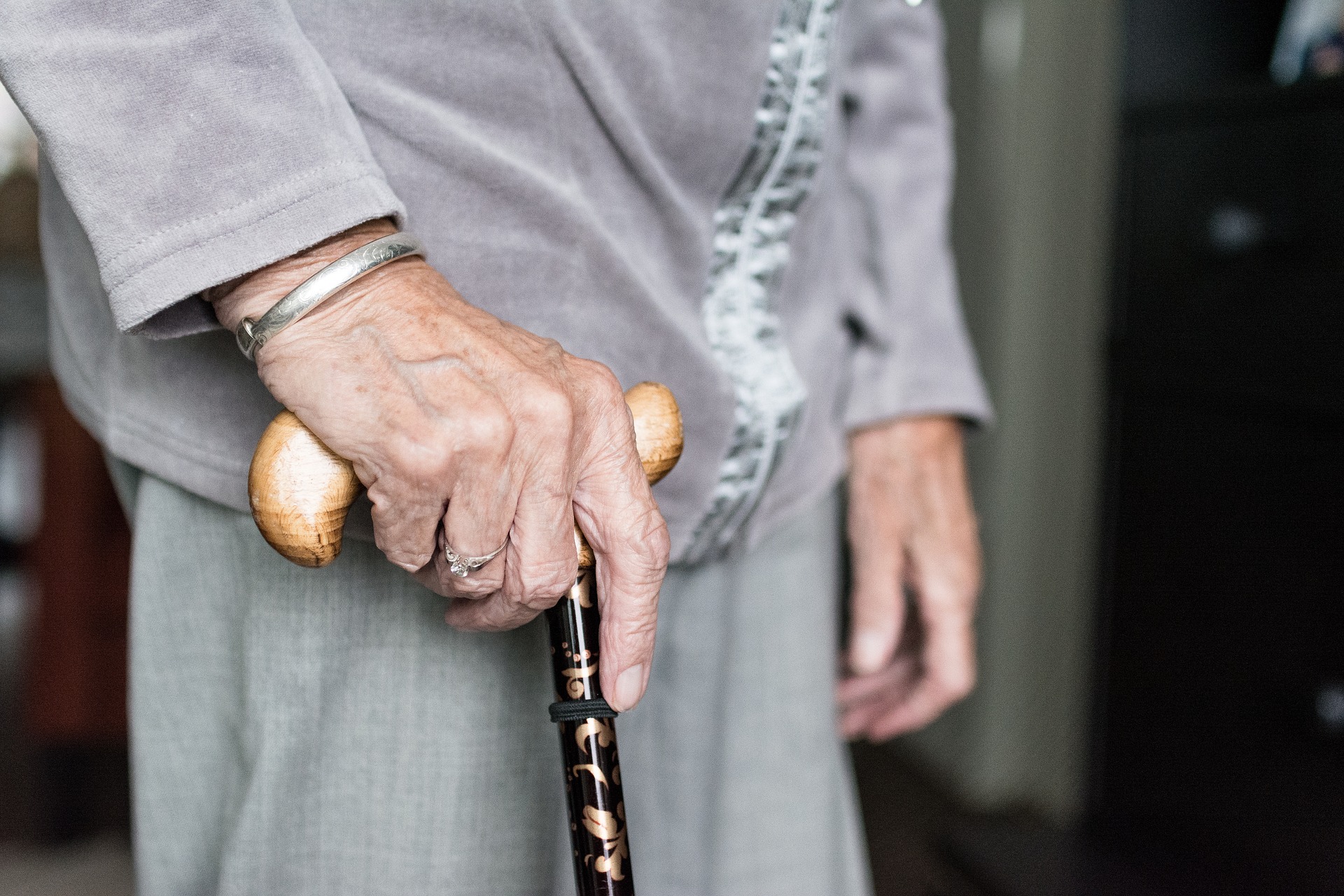A couple times last week the subject of using a cane came up with patients. There is a time and place for

canes, but most of the time I see them being used inappropriately. So I thought I would share my thoughts on canes and similar walking assistance devices.
The idea behind using a walking assistive device is to make walking movements easier and less painful. Sometimes a patient may have an unstable knee or hip joint that they just don’t trust to hold them up consistently. Other times that knee or hip may be too painful to put full weight on it. But the most common reason I find people reaching for canes, walkers, and rollers is because of a loss of their balance capabilities.
The idea of a cane is to provide a third leg for greater

balance. By adding the pressure input from the hand on the cane, your balance centers in the brain get a lot more information to work with than they do just from what the feet are telling them. It is this extra information about where your body is in space that a compromised brain needs to figure out how to stay upright and balanced. One of the neurological tests I do is to simply watch a person stand while their eyes are closed. If that person sways at all, I then know that the balance centers of their brain are not working up to par. Most of the time the person has no idea that they are swaying. I then have them try to stand on one foot with their eyes closed. A healthy person should be able to do this for 15 seconds without a lot of arm swinging or leg kicking. How well do you do?
If these tests fail, I might test further with some standard techniques such as the old eyes closed and touch your nose, the touch the index fingers together out in front of yourself – again with eyes closed, and possibly walking heel to toe with eyes open. These are all tests for

awareness of where you are in space. When you open your eyes you are using a completely different set of brain pathways for balance. Unfortunately the visual system is not fast enough to prevent you from falling if your foot slips or twists on something in your path. You need the tiny proprioceptive (balance) nerves around your knees and ankles working to prevent falls. Fortunately these can be retrained fairly easily and quickly simply by practicing balancing on one foot with your eyes closed several times a day. Grab a wall or counter to steady yourself and catch yourself while you try to balance by intermittently letting go for progressively longer amounts of time.
Clearly I prefer rebuilding healthy functional balance over compensating by using a cane for balance. I have a larger issue with canes however. When you look at a person using a cane you see someone bent forward
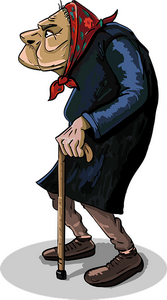
looking at the ground. This is terrible for your back. Most people using a cane for balance want to create a tripod effect for greater stability. Consequently they use the cane way out in front of themselves. The incorrect pattern is placing the rubberized end of the cane out a foot or two in front of themselves and then a shuffle step motion up to the cane, then repeat. This works for balance, but at the expense of your back.
So what do I recommend for the short run until you rebuild your natural balance or in the long run if your balance centers are permanently damaged as they are in the case of the stroke Ellen had in her brain stem? I recommend using a walking staff. A staff should be about the height of your shoulder or a bit more. You do not lean over the staff but rather grip the staff and pull yourself up.

You get the same tripod effect for stability and walk up to it in the same way with the added advantage of standing upright with your eyes looking forward at where you are going. If you need the staff to do some actual support of weight, you will want a good stout solid staff. If you only need the staff as a stabilization aid, then a light weight walking pole will work fine.
So what is the proper use for a cane? When you have a painful knee or hip from which you want to take some of the weight off, then a cane is ideal. Here the cane is used as a way to use the strength of the arm to function as a partial replacement for the leg. When you have to take a lot of weight of the leg, as you walk the rubberized end of the cane is always placed beside the outside ankle of the sore leg and moved with the compromised foot as it steps forward for short time use. For longer use when

the leg can support you somewhat, reverse the position of the cane to the good leg side to coordinate the natural movement of the opposite arm and leg so the cane moves forward at the same time as the bad leg to take some of the weight from the opposite side. This is fairly old school these days as your doctor usually gives you orthopedic foot, knee, or hip braces to do this job. These are much easier to use as your arms are left free to do their normal jobs. If complete weight needs to be lifted from one leg, crutches are routinely used.
Sometimes a person’s balance is compromised to so such a degree that a simple tripod is not enough to provide the level of stability needed. Assuming there is still leg strength and hip mobility, such that an actual
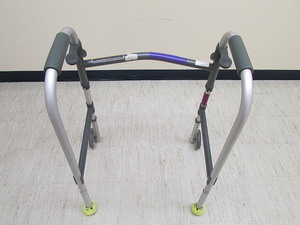
wheelchair is not the only option, then a walker my be in order. Typically these come with wheels on the front two legs and a slide on the back two legs. These are nice because they still keep the person upright like the staff does. The length of the legs need to be adjusted so that the person is not leaning forward on the walker. You want any weight support to come from the arms pushing straight in line with the body, not rolling along out in front of the person. Step forward into the space of the walker and into a full upright position with each step.
A newer contraption is the Rollator. As people get older they lose muscle mass due to not enough exercise and poorer digestion of proteins. This is not a necessary outcome of aging as you can use improved protein quality and quantity to compensate for the poorer digestion combined with digestive aids like hydrochloric acid and protein enzymes taken with meals containing protein. The exercises needed to maintain muscle strength is not that great when you use super slow weight lifting and brief (20 to 30 second) bursts of aerobic movement periodically throughout the day. But the reality is most people do not take the responsibility to care for themselves. Consequently they get weaker as they age. Yes, there is the slow down of growth hormone as we age that is an issue for muscle growth, but this can be compensated for by doing brief 60 hour fasts or fast mimicking diets periodically to boost up growth hormone levels.
Most people don’t do these things, so they get weak to the point that it becomes too much effort for their legs to do all the work of walking. Enter the Rollator, the four
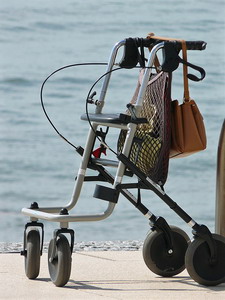
wheeled walker to add stability and allow you to use arm strength to help support your weight. They even provide a convenient seat to sit down on to rest whenever you get tired. They are useful for these people, however I have one main complaint. The brakes on these things should work in an opposite manner to how they are designed. Currently the brakes work just like bicycle brakes. This is crazy. If a person starts to slip or fall, they are not going to think to put on the brakes. Plus there is no way to hold the brakes locked while you want to turn around to sit down. So your chair could easily roll right out from under you. The brakes should be always on and only released by the person squeezing them while they are walking.
A last device to mention is the Hemi cane. Ellen and I have found that there is a real absence of supportive
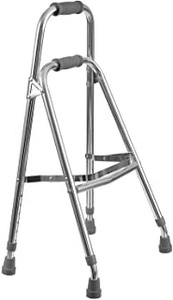
devices for people with one sided dysfunction, such as after a stroke. Everything is built for people with two good arms. The one helpful device for stroke patients is the Hemi cane. It provides a sturdy free standing support for the good arm of the stroke patient. They are light weight and have four feet for providing good upward support for the weight of the stroke patient. They suffer some of the drawbacks of any cane, so the height needs to be adjusted carefully.
This newsletter may seem rather specialized, but when patients start asking questions in the office, I know it is time to do a newsletter on the subject.
Take care,
David
